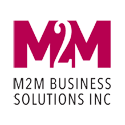
Job Hunting is like Going to a Buffet Meal For Candidates- What Does This Mean for Organizations and Their Leaders?
Ever been to a buffet brunch? If you’re like me (which I’m sure most of you are), you’ll look around first to know what all’s there. And you probably try a few dishes before going for the kill. That’s what job hunting has become for most candidates today.
With the global talent shortage hitting us harder than ever, organizations are unfortunately on the other side of the buffet trying to get people to take their food.
‘The Great Resignation’ challenge (Read what I wrote about it on Forbes) isn’t helping the cause either.
And that’s not the end of it. Businesses today are challenged with building two businesses simultaneously – business of today and business of tomorrow.
According to McKinsey’s 2021 Global Report, business leaders expect almost 50% of their revenues by 2025 to come from products, services, or businesses that do not yet exist. This means that the role of a future-ready workforce would be more critical than ever.
Talent acquisition is the first step to achieving this colossal undertaking. However, the pandemic has introduced newer challenges that require business leaders and HR professionals to refine their hiring practices.
Here’s my take on what appears to be the biggest hiring challenges in 2022-
1. Re-defining the Candidate Experience
According to a CareerBuilder study, nearly 4 in 5 candidates say the overall candidate experience they receive indicates how a company values its people.
Recruitments are no longer a one-way street. The playing field has levelled or rather tilted in favour of candidates over the last few years. Just as organizations are looking for candidates who are the right add-on, candidates too, are looking for organizations that match their values and fulfil their expectations.
Businesses today can no longer overlook candidate experience. Here’s how businesses can refine or re-define the candidate experience-
- Streamline the application process
- Write clear and concise job descriptions
- Communicate regularly and be accessible
- Notify the candidates at the earliest if a position has been filled
2. Addressing Talent Shortage
By 2030, the skills gap and talent shortage in the US alone is expected to total a loss of $8.5 trillion, as per a PwC report.
The demand for talent has been significantly exceeding the supply for quite some time. This trend is expected to continue well into the future. Building a qualified talent pool or a database of candidates interested in working for your company can protect your organization against talent shortage.
A few tips that can help you build a qualified talent pool are-
- Build a talent community landing page
- Add the sourced candidates to the talent pool
- Try to re-engage candidates who didn’t make the cut
- Engage graduates-to-be and students. Catch them young.
3. Finding Talent That Rightly is an Add-on to the Organization Culture
According to a CareerBuilder survey, 2 in 3 workers say they accepted a job only to realize it was a bad fit later. Almost 50% of such workers quit their jobs within 6 months.
Organizations employ innovative interview techniques and advanced tools for assessing the competencies and skills of the candidates. But even ones who are found to be the best in the screening process might not always be the right choice for your organization.
While they might be a great technical fit, you also need to ascertain the cultural competencies. If you don’t hire employees that align with your culture, your organizational culture will eventually fit around your employees.
Here’s how organizations can find technical and culturally fit employees-
- Clearly define the company culture
- Convey company culture in all the hiring materials
- Train the HR staff on how they should discuss the company culture with the applicants
- Provide candidates with an immersive overview of the company culture
4. Managing Salary Expectations and Hiring Costs
A Pew Research Center survey suggests that 56% of Americans who quit their jobs in 2021 are now employed and are making more money than before.
While every employee should be adequately paid as per their skills and experience, it is equally important to maintain your hiring costs. This is especially true in the post-pandemic world, where almost 47% of the organizations have reduced their recruiting budget, says a LinkedIn report.
Here are some tips to help organizations reduce their hiring costs-
- Build an employee referral program
- Use advanced recruiting software for reducing cost per hire
- Use your social channels to find the right candidates
- Promote internally and provide adequate training
5. Onboarding – The Last Piece of the Puzzle
About 30-40% of employees quit their job within the first six months. And the cost of replacing an employee can be about 1.5-2 times their annual salary.
If your onboarding isn’t right, you’re going to lose out on all that hard work put in by your organization in recruiting that top talent. Many businesses today confuse onboarding with orientation. Orientation is the start, but onboarding is key.
For businesses, it has become more important than ever to build a sustainable onboarding process. Here are some tips-
- Customize your onboarding plan for every new hire
- Create a Standard Operating Procedure
- Cover skill gap with suitable training programs
- Balance learning and doing
- Assign a mentor and a buddy (partner)
Responding to the Latest Recruiting Challenges
The recruiting staff needs to work incessantly to compete with their peers in wooing and retaining top talent. As the talent demand is at an all-time high, a proactive approach to tackle the recruiting challenges could be a step in the right direction.
Fortunately, organizations don’t have to fight this battle alone. They can consider professional assistance to help them identify and resolve the hiring challenges.
Leadership development programs can positively contribute towards your endeavors of building a future-ready workforce that can help the organization take maximum advantage of every new opportunity and continue growing.
Best Professionals Development Skills Training in Toronto, Canada | Professionals Development Skills Training in United States
The Best Professionals Development Skills Training in Canada, M2M Business Solutions is considered among Top Professional Development Training Programs in Toronto, Canada owing to its quality professional training services, winning professional Skills Development techniques. Our extensive experience trainer and dedicated team of Professional Trainers make us well poised to emerge as the Famous Professionals Development Skills Training in United States!


